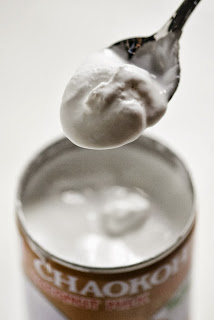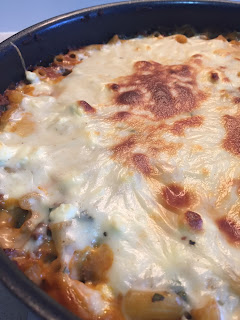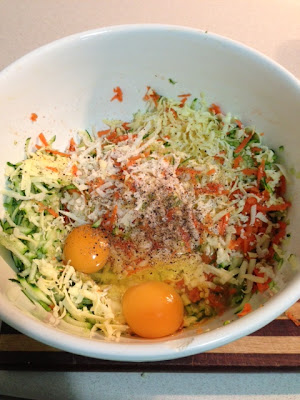Coconut Panna Cotta with Mango, Lychee & Mint
Panna Cotta, meaning cooked cream in Italian, is a sweetened cream and milk mixture that is heated and then mixed with gelatine and set in a mould. It's a great dessert because its easy to make, light and very versatile.
Traditionally it is served with either berries, caramel or chocolate, but really its a blank canvas to be paired with anything, especially citrus or tropical fruit that tend to cut the richness of the cream.
It's funny and a little bit rude but I've always been told that the perfect panna cotta consistency should yield a wobble similar to a woman's breast LOL. Basically meaning that you should add just enough gelatine so that it barely holds its shape when turned out of the mould. If your panna cotta fits this criteria it will be light and should melt in your mouth.
I decided to share a coconut panna cotta just for something a little bit summery and a little bit more special.
You will need...
1Lt coconut cream
150ml full cream milk
100gr caster sugar
1 vanilla pod
3 leaves gelatine (Gelita Brand-Titanium) ***
4 mango cheeks, skin removed
8 lychees, peeled, halved & deseeded (tinned work fine too)
sprig mint
60gr melted unsalted butter
caster sugar, for coating moulds
Method...
1. Brush 6 large dariole moulds (or 12 small) with melted butter and line with caster sugar, tap out the excess sugar. Alternately you can serve the panna cotta in glass bowls, in which case you don't need to grease them, just make sure they are clean and dried well.
1. Combine the milk, coconut cream, sugar and vanilla pod together in a heavy based saucepan.
2. Place on a medium heat until the mixture is simmering well, stir with a wooden spoon then remove from the heat to cool slightly.
3. Lay out the gelatine leaves in a shallow tray and pour enough cold water over them to cover. Leave to soak for 1 minute, or until the leaves have softened to a rubbery texture. Remove the leaves and squeeze out the excess water.
4. Drop the leaves into the cream mixture and stir well with the spoon until the leaves are totally dissolved. Use a ladle to carefully fill the moulds or glasses with the mixture, place the filled moulds into a flat tray as you do this for easy storage in the fridge.
5. Place the tray with the filled moulds in the fridge, uncovered, in a place were they won't be knocked or where anything can fall into them, overnight.
6. When you're ready to serve the panna cotta, prepare the mangoes by cutting them into small cubes, and cutting the lychees to roughly the same size. Tear up the mint and mix all together.
7. To remove the panna cotta, use the warmth from your hands on the outside of the mould to release the set mixture from the sides (or you could quickly use a blowtorch or sit in a bath of warm water for 10 seconds), you may need a small paring knife just to loosen the top of the pannacotta. Place your dessert plate upside-down on top of the mould, then carefully flip the plate & mould over. You should now be able to pull the mould off and have the panna cotta remain on the plate. Serve the mango salad on the side
***Tricks when using gelatine;
· 1 Gold Leaf = 2.2gm
· 1 Titanium Leaf = 5gm
Traditionally it is served with either berries, caramel or chocolate, but really its a blank canvas to be paired with anything, especially citrus or tropical fruit that tend to cut the richness of the cream.
It's funny and a little bit rude but I've always been told that the perfect panna cotta consistency should yield a wobble similar to a woman's breast LOL. Basically meaning that you should add just enough gelatine so that it barely holds its shape when turned out of the mould. If your panna cotta fits this criteria it will be light and should melt in your mouth.
I decided to share a coconut panna cotta just for something a little bit summery and a little bit more special.
 |
1Lt coconut cream
150ml full cream milk
100gr caster sugar
1 vanilla pod
3 leaves gelatine (Gelita Brand-Titanium) ***
4 mango cheeks, skin removed
8 lychees, peeled, halved & deseeded (tinned work fine too)
sprig mint
60gr melted unsalted butter
caster sugar, for coating moulds
Method...
1. Brush 6 large dariole moulds (or 12 small) with melted butter and line with caster sugar, tap out the excess sugar. Alternately you can serve the panna cotta in glass bowls, in which case you don't need to grease them, just make sure they are clean and dried well.
1. Combine the milk, coconut cream, sugar and vanilla pod together in a heavy based saucepan.
2. Place on a medium heat until the mixture is simmering well, stir with a wooden spoon then remove from the heat to cool slightly.
3. Lay out the gelatine leaves in a shallow tray and pour enough cold water over them to cover. Leave to soak for 1 minute, or until the leaves have softened to a rubbery texture. Remove the leaves and squeeze out the excess water.
4. Drop the leaves into the cream mixture and stir well with the spoon until the leaves are totally dissolved. Use a ladle to carefully fill the moulds or glasses with the mixture, place the filled moulds into a flat tray as you do this for easy storage in the fridge.
5. Place the tray with the filled moulds in the fridge, uncovered, in a place were they won't be knocked or where anything can fall into them, overnight.
6. When you're ready to serve the panna cotta, prepare the mangoes by cutting them into small cubes, and cutting the lychees to roughly the same size. Tear up the mint and mix all together.
7. To remove the panna cotta, use the warmth from your hands on the outside of the mould to release the set mixture from the sides (or you could quickly use a blowtorch or sit in a bath of warm water for 10 seconds), you may need a small paring knife just to loosen the top of the pannacotta. Place your dessert plate upside-down on top of the mould, then carefully flip the plate & mould over. You should now be able to pull the mould off and have the panna cotta remain on the plate. Serve the mango salad on the side
***Tricks when using gelatine;
Gelatine Equivalents
· 1 teaspoon Gelatine Powder = 3.3gm· 1 Gold Leaf = 2.2gm
· 1 Titanium Leaf = 5gm
 |
| http://www.thegrocer.com.au/shop/gelatine-leaf-titanium-approx-180-sheets-2/ |
Tips for using gelatine:
Leaf gelatine requires soaking in cold liquid before being added to hot liquid to dissolve.
Always ensure your gelatine is fully dissolved before chilling.
Keep gelatine in a well-sealed, cool, dry place.
Gelatine continues to solidify over time, so the texture and consistency of a dish you have pre-prepared can change by the time you serve it.
During the cooking process, boiling can damage the gelatine’s setting capability. Where possible, try to dissolve gelatine away off the heat.
Pineapple, kiwifruit and other (mostly tropical) fruits contain enzymes that can prevent gelatine from setting. These enzymes, however, are destroyed when the fruits are cooked.
Information from http://www.essentialingredient.com.au/ingredients/leaf-gelatine/



Comments
Post a Comment